22 Types of Peppers Every Cook Needs to Know About ASAP
When it comes to cooking ingredients, nothing spices up a recipe quite like peppers. While many of us are most familiar with bell peppers (quesadilla, anyone?) and jalapeno poppers for the more adventurous, there are quite a few different types of peppers out there.
Whether you’re looking to mix up your weekly recipes or enhance your culinary skills, here are 22 types of peppers you should consider adding to your grocery cart.
Types of Peppers
1. Bell peppers
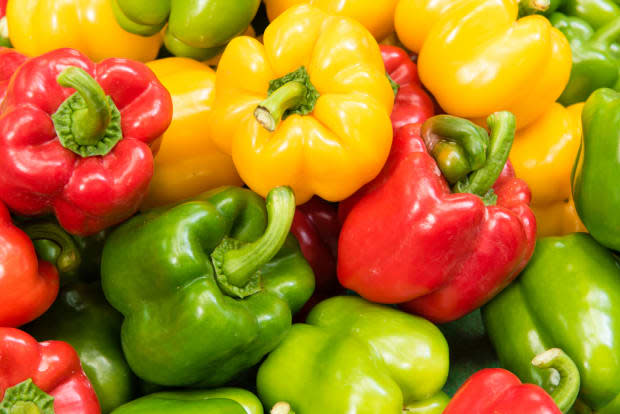
iStock
As the name suggests, bell-pepper-shaped and much larger than green peppers. They are also called capsicum or sweet pepper. They have yellow, orange, green and red varieties. They are great for adding a pop of color and moisture to the dish, Bill Bradley, RD, CEO at Mediterranean Living, explains.
2. Piquillo
If you’re looking for something that’s less spicy, you may want to try piquillos.
They are like bell peppers with smoky and tart flavors. They are ideal for sandwiches or served roasted alongside tapas, Bradley states.
3. Shishito
These small bright green peppers are very versatile, adding a nice flavor to many different dishes.
Also called groundcherry peppers, they are slightly bitter with mild heat, says Bradley. They can be eaten raw or can be added to a pizza.
4. Banana peppers
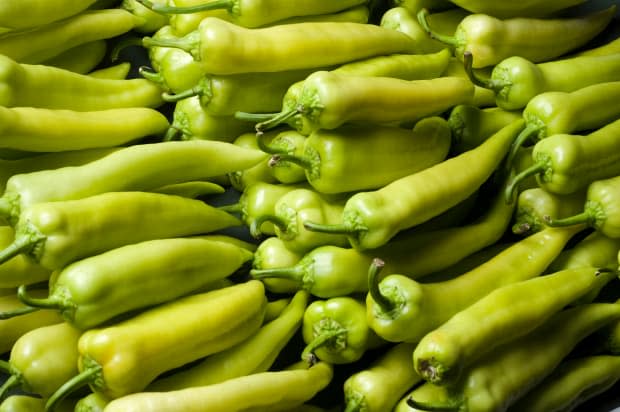
iStock
A member of the chili pepper family, banana peppers can be stuffed or used as an ingredient in recipes such as salsas or mixing them into salads.
They are yellow in color with mild heat and tangy flavor. They are rich in Vitamin C, Bradley explains.
5. Padrón peppers
Also called Herbón peppers, these peppers are very flavorful and a popular addition to many Spanish dishes.
They are typically sweet with mild heat, but some varieties are spicy. They are best served fried and grilled alongside tapas, says Bradley.
6. Cherry peppers
A tasty pickled condiment in a sandwich or a salad topping, cherry peppers can also be added to omelettes for a pop of color and a hint of sweetness.
These bright-red and heart-shaped peppers lack spice and are perfect for pimento cheese, Bradley explains.
7. Peri-peri
Calling all spicy fans! Peri-peri peppers are on the hot side and have a very distinct taste.
These peppers might be small in size, but they pack quite a punch. They're used to make African hot sauce, Bradley states.
Related: Hot Sauce and Umami-Bomb Fish Sauce Are the Secret to Chrissy Teigen’s Spicy Crab Dip
8. Poblano pepper
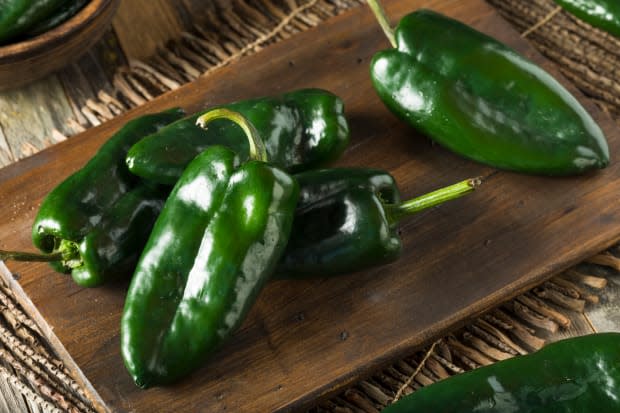
iStock
Poblano peppers are fairly big, making them ideal for stuffing. They are often sold fresh and have a nice flavor and mild heat, Isla Zyer, nutritionist, blogger, and plant-based nutrition expert at Obesity Controllers Association, explains.
9. Guindilla verde
Guindilla Verde has a distinct sweetness and a flavor similar to Hatch chilies, says Zyer. It makes a good fryer alongside faux meat dishes.
10. Serrano pepper
This versatile Mexican classic is perfect for making salsa, guacamole, and vegan tacos, Zyer explains. You can buy them fresh, pickled, or dried.
11. Habanero chile
This tiny pepper packs a lot of heat. Add them to your salsa, make them into hot sauce, or use them to add flavor and a lot of heat to your vegan recipes, Zyer states.
12. Anaheim
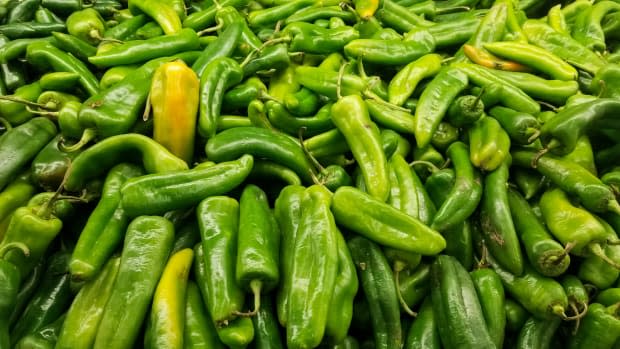
iStock
Anaheim peppers can range from mild to spicy, and can be used similarly to poblano peppers. Anaheim peppers grown specifically in Hatch, New Mexico are called Hatch Chiles, and can be particularly spicy.
Like other peppers, anaheim peppers are high in vitamins C and A. They also contain vitamins K and B6, Kaleigh McMordie, RDN, recipe developer, explains.
13. Fresno
Fresno peppers are very similar to jalapeño peppers, but they are red in color when ready to eat and taste slightly more spicy, sweet and smoky, McMordie states. They can be used in almost any dish that calls for jalapeños and have a similar nutrition profile.
14. Chipotle
Chipotle peppers are jalapeño peppers that have been dried and smoked. They give a spicy, smoky flavor to many Mexican dishes and can be ground up into a powder to be used as a spice or canned.
Chipotles are higher in vitamin A and lower in vitamin C than fresh jalapeño peppers, McMordie explains.
15. Thai chili/birdseye peppers
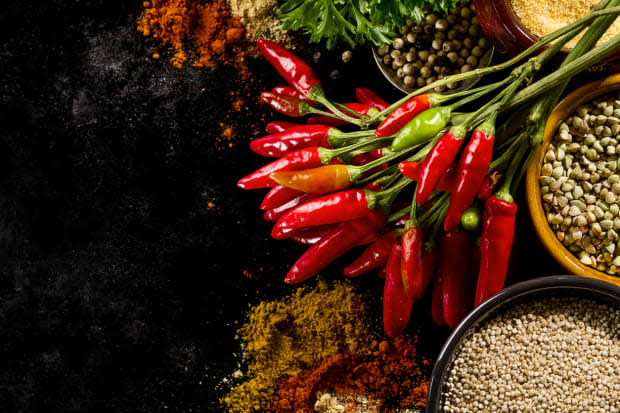
iStock
Birdseye peppers are a type of Thai chili pepper, and there are actually over 60 varieties of Thai chilis.
“I like the flavor of birdseye chilis the most out of the Thai chilis I've tried; I think the flavor combines so well with the creaminess of coconut milk and starchiness of rice,” Stephanie Nelson, MS, RD and MyFitnessPal’s lead nutrition scientist. “They are much spicier than jalapenos, but they are more tolerable than habaneros.”
As far as health benefits, these are hot enough that you’re unlikely to eat enough to get any kind of substantial vitamin or mineral. However, they do pack a lot of capsaicin (remember, the spicier the pepper, the more capsaicin it contains), so birdseye peppers have antioxidant effects, Nelson adds.
16. Hatch chile peppers
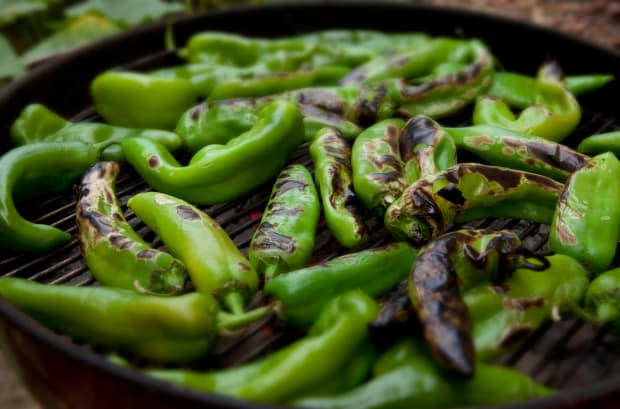
iStock
Hatch chiles are a cousin of Anaheim chiles, but they are only grown in the Hatch Valley region of New Mexico. They are also only available for a limited time each season for about 4-6 weeks, so everyone in the southwest goes crazy on Hatch chiles each year.
They have an earthy and buttery flavor that makes them unique from Anaheim chiles, and are great if they are roasted and stuffed with cheese, rice, and other vegetables, Nelson explains. Hatch chiles have a decent amount of vitamin C, and they can be about as spicy as jalapenos. Some varieties can be much spicier, though, and therefore have more capsaicin and antioxidant capacity.
17. Pasilla peppers
Pasilla peppers are a key ingredient to a mole sauce. These peppers are actually a dried chilaca pepper, and the drying process takes out a lot of the vitamin C. However, they do have some capsaicin in them so they have antioxidants, Nelson says. They are milder than jalapenos, so they are also a good choice if you’re new to spicy food.
18. Jalapeño
Jalapeños are a versatile pepper that’s delicious slices over soups, burgers, and dips. Jalapeños are somewhat spicy, but you can make them more mild by scooping out the white seeds in the middle.
These peppers are also filled with nutrients like vitamin C, vitamin B6, and fiber, Mackenzie Burgess, RDN, registered dietitian nutritionist and recipe developer at Cheerful Choices, states. In fact, one cup sliced contains 107 mg of vitamin C– that’s over 100% of our recommended daily amount!
19. Cayenne
Cayenne peppers are a type of medium-hot pepper, which you’ll also find in ground spice form. These peppers contain a compound called “capsaicin”, which research shows may be protective against various types of cancer, says Burgess.
You can try blending cayenne into hot sauces, guacamole, or soups. If you don’t regularly cook with cayenne, you can also find it in nourishing drinks, like this one from Suja Juice.
20. Mini sweet pepper
These tiny peppers are similar to bell peppers, but tend to be sweeter in flavor profile. They’re perfect for snacking on alone or dipping into homemade hummus, Burgess explains.
21. Carolina reaper pepper
The hottest chili in the world is the Caroline Reaper pepper which is high in vitamin C and vitamin A - which work to improve your vision and boost your immune system.
Carolina Reaper peppers are also low in fat with no cholesterol, says Lauren Helen Marsh, Clinical Nutritional Therapist and Health Coach at Holistic Wellness Platform, Able. They have also been shown to have anti-inflammatory properties, causing the body to release endorphins to counteract the perceived pain of the spice.
22. Black pepper
There are several potential health benefits of black pepper for the body and brain, and many of them come from the black pepper compound piperine, Marsh explains.
Piperine has been known to:
Helps in losing weight
Detoxifies your body
Prevents cancer
Cleanses your intestines and stomach
It consists of potassium that helps in regulating heart rate and high blood pressure
Helps in producing red blood cells
Rich in vitamin B and produces calcium
Prevents constipation
Prevents skin deformation & wrinkles
Next up: 10 New Ways to Try Hatch Chile Peppers
Sources
Bill Bradley, RD, CEO at Mediterranean Living
Isla Zyer, nutritionist, blogger, and plant-based nutrition expert at Obesity Controllers Association
Kaleigh McMordie, RDN, recipe developer
Stephanie Nelson, MS, RD and MyFitnessPal’s lead nutrition scientist
Mackenzie Burgess, RDN, registered dietitian nutritionist and recipe developer at Cheerful Choices
Molecules: “Capsaicin: From Plants to a Cancer-Suppressing Agent”
Lauren Helen Marsh, Clinical Nutritional Therapist and Health Coach at Holistic Wellness Platform, Able
